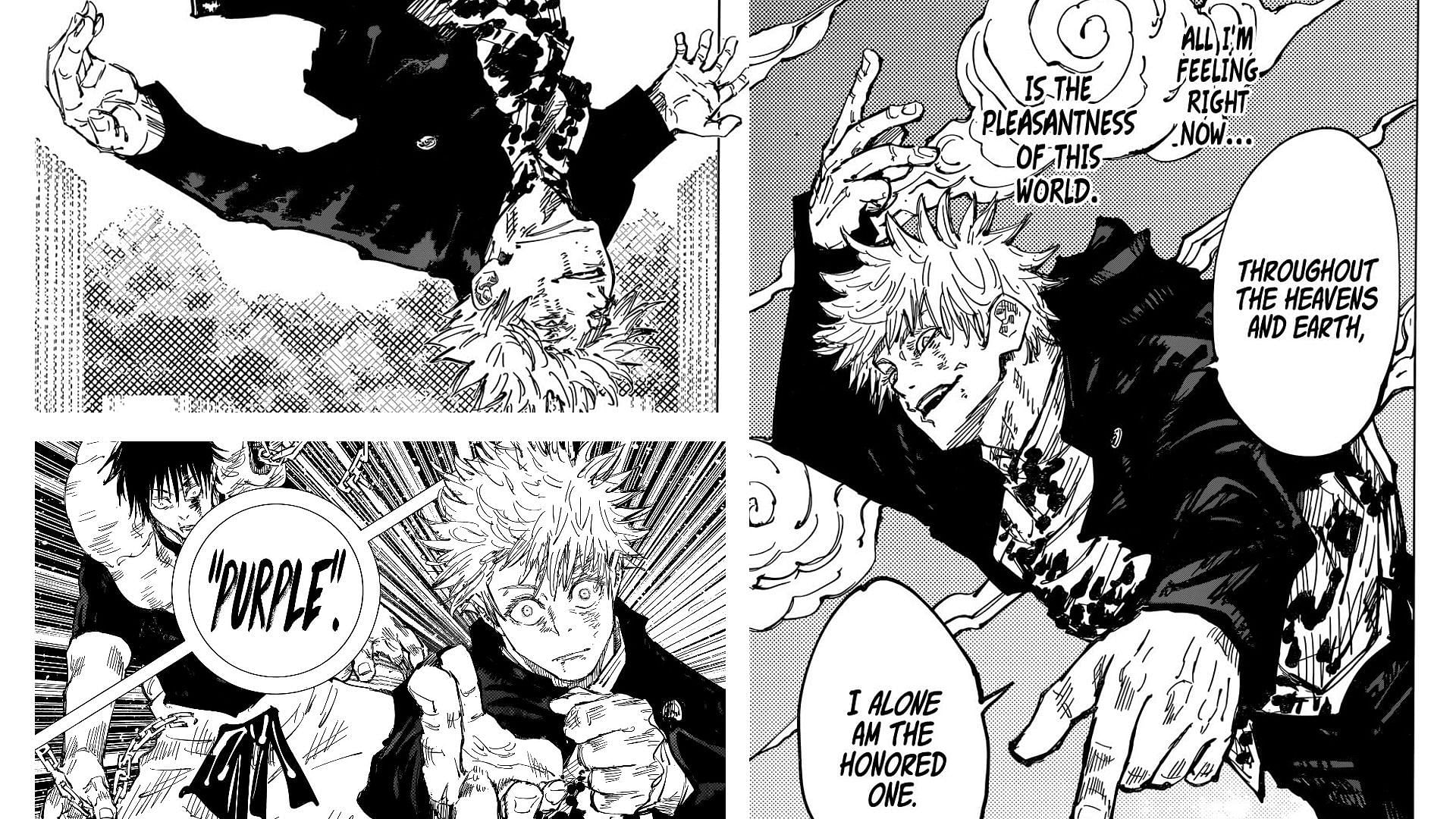Jujutsu kaisen manga panel – Jujutsu Kaisen manga panels? Yo, let’s dive deep into the art that makes this manga fire! From the early chapters to the latest arcs, the paneling style totally evolves, showing off crazy action sequences and character development. We’re talkin’ about how panel size, composition, and even color choices totally shape the story and make you feel
-everything*.
It’s like, the art’s not just pretty; it’s a whole other layer of storytelling, dude.
We’ll break down how the artists use panels to show off emotions, build suspense, and drop major plot twists. We’ll explore the symbolism, the crazy fight scenes, and how different artists bring their own unique styles to the table. Get ready to geek out – this is a deep dive into the visual storytelling magic of Jujutsu Kaisen.
Jujutsu Kaisen Manga: A Deep Dive into Panel Style and Narrative: Jujutsu Kaisen Manga Panel
Yo, what’s up, manga heads? Let’s break down the sick artistic evolution and storytelling genius behind Jujutsu Kaisen’s manga panels. From the early chapters to the latest arcs, the art style has undergone a total transformation, and we’re diving deep into how it all works. We’re talking panel composition, character representation, action sequences, and the crazy symbolic imagery that makes this manga so dope.
Artistic Style Evolution in Jujutsu Kaisen Manga Panels
The art style of Jujutsu Kaisen has evolved significantly throughout its run. Early chapters feature a slightly rougher style, with simpler linework and shading. As the series progressed, the style became more refined, incorporating more detailed backgrounds and dynamic panel layouts. The shift is noticeable, especially in the portrayal of cursed energy, which became increasingly expressive and visually stunning.
Paneling techniques also changed; early chapters often utilized more static, straightforward layouts, while later chapters embraced more experimental and visually arresting compositions. Recurring motifs like the use of circles and spirals, often associated with cursed energy and spiritual power, add layers of symbolic meaning. The color palette, initially subdued, has expanded to incorporate more vibrant hues, enhancing the emotional impact of different scenes.
The use of shading and light has also become increasingly sophisticated, adding depth and drama to the visuals.
| Arc | Artist | Panel Style | Notable Features |
|---|---|---|---|
| Hidden Inventory/Pre-Shibuya | Gege Akutami | Relatively simpler linework, more static panel layouts | Emphasis on character expressions, establishing character designs |
| Shibuya Incident | Gege Akutami | More dynamic paneling, increased detail in backgrounds and action sequences | Intense use of motion lines, dramatic shifts in perspective |
| Post-Shibuya | Gege Akutami | Further refinement of style, more complex panel compositions | Subtle use of color, enhanced detail in character expressions |
Panel Composition and Narrative Impact, Jujutsu kaisen manga panel
Panel size and arrangement are crucial in Jujutsu Kaisen. Larger panels emphasize important moments, while smaller panels accelerate the pace. The strategic use of gutters (the space between panels) controls the reader’s flow, creating tension or allowing for a breather. Perspective and framing are masterfully employed to create dramatic effects, enhancing the storytelling. For instance, low-angle shots emphasize power, while high-angle shots can convey vulnerability.
Strategic panel composition builds suspense, often culminating in a powerful reveal or a shocking plot twist.
Examine how boruto manga blue vortex can boost performance in your area.
Character Representation Through Panels
Panels effectively convey character emotions. Close-ups reveal subtle expressions, while long shots emphasize a character’s place within their environment. The style varies depending on the character; for instance, Gojo’s panels often feature bold, confident poses, while Yuji’s might show more internal struggle. Panels show character development, often visually depicting transformations in personality or power. A series of panels could track Yuji’s emotional journey from naive optimism to the burdens of his role.
Action Sequences and Dynamic Paneling

Jujutsu Kaisen uses dynamic paneling to portray fast-paced action. Speed lines, motion blur, and varied panel sizes create a sense of movement and energy. Different action types are handled differently; hand-to-hand combat might use a rapid succession of small panels, while a cursed technique might use a single large panel to showcase its power. Panels brilliantly convey the intensity of cursed energy, often using visual effects like glowing lines and distorted perspectives.
Symbolic Imagery in Jujutsu Kaisen Manga Panels

Recurring symbols like cursed spirits, specific objects, or even color palettes carry contextual meanings. Visual metaphors and symbolism convey deeper thematic elements. For example, the color red might symbolize both passion and danger.
- The Shibuya Incident Arc: Panels depicting the chaotic scene are often filled with swirling lines and distorted perspectives, visually representing the overwhelming power and chaos of the cursed spirits.
- Gojo’s Confinement: Panels showcasing Gojo’s imprisonment often use dark, oppressive colors and claustrophobic layouts to emphasize his isolation and vulnerability.
- Yuji’s Internal Conflict: Panels depicting Yuji’s struggle between his desires and his responsibilities often utilize contrasting colors and perspectives to represent his internal conflict.
So, yeah, Jujutsu Kaisen manga panels are way more than just pictures; they’re a crucial part of what makes the manga so epic. The evolution of the art style, the creative panel compositions, and the killer use of symbolism all work together to create an unforgettable reading experience. Whether you’re a seasoned Jujutsu Kaisen fan or just starting out, appreciating the artistry of the panels takes your enjoyment to a whole new level.
It’s seriously next-level storytelling, and we’ve only scratched the surface!



